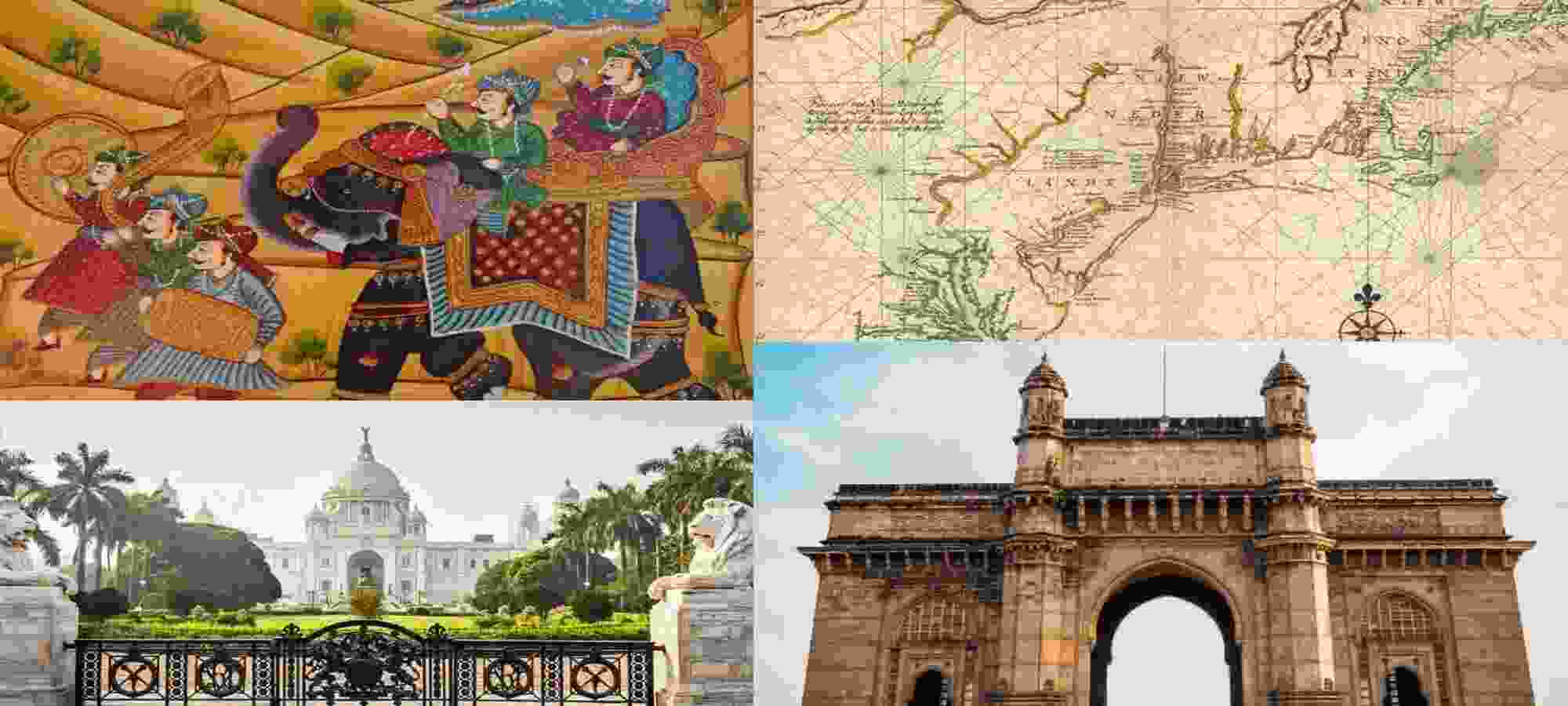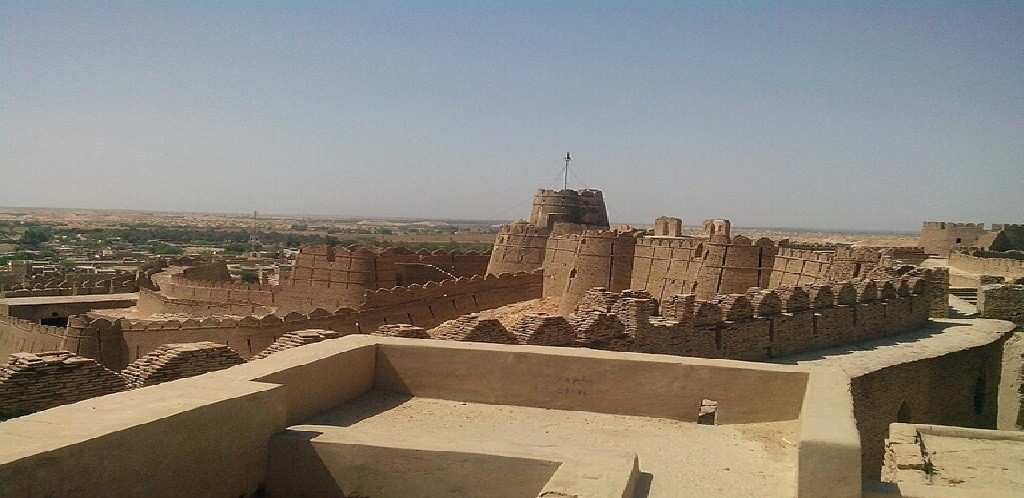Picture attributes to: https://www.thetalentedindian.com/colonisations-irreversible-impact-on-indian-art-culture/
India, a land of ancient civilizations, rich cultural diversity, and a long-standing history of artistic excellence, is home to one of the world’s most significant and diverse art heritages. From the rock-cut temples of Ellora and Ajanta to the intricately carved sculptures of Khajuraho, India’s art and architectural treasures speak volumes about its rich cultural, religious, and historical journey. The country’s artistic heritage spans thousands of years, with contributions from various dynasties, empires, and indigenous traditions. However, despite the wealth of art and cultural heritage, India faces an ongoing challenge to preserve and protect its artistic legacy in the face of modernity, urbanization, and globalization.
This essay seeks to critically explore the importance of safeguarding India’s art heritage, the challenges it faces, and the steps necessary to ensure its preservation for future generations. The discussion will cover the significance of Indian art heritage, the threats it faces, and why it is imperative to act swiftly to protect this invaluable treasure. The essay will also examine the role of government, private organizations, and the public in this effort.
1. The Richness of Indian Art Heritage
India’s artistic heritage is vast and diverse, encompassing a wide range of forms including painting, sculpture, architecture, music, dance, literature, and crafts. The country’s art reflects its religious, cultural, and philosophical ideals, which have been passed down through the ages, adapted, and reinterpreted by different generations.
1.1 Ancient Indian Art: The Foundations of Indian Culture
Indian art can be traced back to the Indus Valley Civilization (c. 3300–1300 BCE), where some of the earliest forms of artistic expression were found in the form of terracotta figurines, seals, and pottery. However, it was the Mauryan Empire (c. 322–185 BCE) that saw the emergence of monumental stone art, with the famous Ashoka pillars and stupas marking a turning point in Indian art history. The Gupta period (c. 320–550 CE) is often considered the golden age of Indian art, particularly for its religious and architectural contributions, including the cave temples at Ajanta and Ellora, as well as sculptures in Hindu, Buddhist, and Jain traditions.
1.2 Medieval Indian Art: Flourishing under the Dynasties
As Indian society became more complex and kingdoms rose and fell across the subcontinent, regional artistic traditions began to flourish. The Chola dynasty in the south developed exquisite bronze sculptures, while the Delhi Sultanate and the Mughal Empire in the north influenced the development of Indo-Islamic art. Mughal miniature paintings, Persian-inspired calligraphy, and intricate architecture such as the Taj Mahal are some of the most iconic legacies of this period.
1.3 Modern and Contemporary Indian Art
With the advent of British colonialism and the eventual rise of independence movements in India, the 19th and 20th centuries brought about a shift in Indian art. Artists began to incorporate Western techniques and styles while also drawing on their indigenous roots, leading to the rise of modern Indian art. Prominent names such as Raja Ravi Varma, Amrita Sher-Gil, and Rabindranath Tagore have left their mark on the global art scene, blending traditional Indian motifs with contemporary expressions. The post-independence period saw the flourishing of modern art, with movements like the Progressive Artists’ Group and contemporary Indian artists gaining international recognition.
2. The Current State of Indian Art Heritage
Despite its historical prominence and the immense value of its artistic heritage, India faces numerous challenges when it comes to preserving its art and cultural legacy. The rapid pace of urbanization, the impact of climate change, the lack of sufficient preservation funding, and the erosion of traditional knowledge and skills are among the primary factors that jeopardize the future of Indian art heritage.
2.1 Threats to Indian Art Heritage
- Urbanization and Development: As cities expand and infrastructure projects take precedence, many important cultural sites and monuments are at risk of being encroached upon or destroyed. The construction of roads, dams, and buildings can lead to the displacement of heritage sites, leaving them vulnerable to neglect and disrepair.
- Climate Change: India’s tropical climate, with its humidity, heavy rains, and extreme temperatures, is particularly harmful to ancient structures and artwork. The effects of climate change, including increasing temperatures and erratic weather patterns, further exacerbate the degradation of art and architecture, particularly in open-air sites such as ancient temples and caves.
- Looting and Illicit Trade: The illegal trafficking of antiquities is a significant threat to India’s art heritage. Precious sculptures, paintings, and artifacts are frequently stolen and sold on the black market, both domestically and internationally. The looting of sites like the Ellora caves and the theft of iconic works of art, such as the Nataraja statue from the Chola dynasty, underscore the vulnerability of India’s cultural treasures.
- Neglect and Lack of Maintenance: Many of India’s historical monuments and artworks suffer from years of neglect due to a lack of proper funding for their upkeep. Government initiatives are often insufficient in addressing the large-scale preservation challenges, and private sector involvement is limited.
2.2 The Role of Technology and Modernization in Preserving Art
While modernization and technological advancements have created challenges for the preservation of Indian art, they also offer a promising avenue for safeguarding cultural heritage. Digital technology, for example, can play a pivotal role in documenting and preserving India’s art and heritage.
- Digitization of Artworks: The digitization of ancient manuscripts, paintings, and sculptures offers an invaluable way to preserve them for future generations. Digital replicas, 3D models, and virtual reality can help protect artworks from environmental hazards while providing access to a global audience.
- Restoration Techniques: Advances in restoration and conservation techniques, such as nanotechnology and laser cleaning, have allowed for more effective preservation of artworks. The use of these methods on ancient structures can prevent further deterioration and help restore damaged artifacts to their former glory.
3. The Importance of Safeguarding Indian Art Heritage
The preservation of Indian art heritage is not just an issue of conserving the past but also an imperative for the present and future. The art and culture of India are intrinsic to the identity and history of its people, providing a sense of continuity and pride. The significance of safeguarding this heritage extends beyond aesthetic appreciation to social, economic, and educational spheres.
3.1 Cultural Identity and National Pride
Indian art is a powerful expression of the nation’s identity, history, and diversity. From the sacred art of temples to the folk traditions of rural India, every piece of art tells a story of India’s evolution. By preserving these treasures, we maintain a link to our past, allowing future generations to understand their heritage and the cultural fabric that binds them together.
The national pride in India’s art heritage is evident in the global recognition of iconic monuments like the Taj Mahal, the ancient temples of Khajuraho, and the intricately carved Buddhist caves of Ajanta and Ellora. Safeguarding these works is not just about protecting physical objects, but about maintaining the cultural and emotional connection they represent for millions of people.
3.2 Education and Research
Indian art offers a wealth of knowledge in the fields of history, religion, and anthropology. Preserving these artifacts ensures that researchers and students can study them for educational purposes, helping to build a deeper understanding of ancient civilizations, artistic techniques, and cultural practices. Indian art history also offers valuable insights into the evolution of cultural and social values, as well as the cross-cultural exchanges between India and other civilizations through the centuries.
3.3 Economic Value
Cultural tourism is an essential component of India’s economy, and preserving the country’s art heritage can contribute significantly to the nation’s economic growth. Art tourism has the potential to attract millions of visitors who come to experience India’s historical monuments and artworks. UNESCO’s recognition of several Indian sites as World Heritage sites highlights the economic potential of art heritage in drawing tourists and creating jobs in the tourism and hospitality sectors.
3.4 Global Impact and Diplomacy
India’s art heritage also plays an important role in its global cultural diplomacy. Through international exhibitions, collaborations, and cultural exchanges, Indian art helps to foster relationships with other nations and showcase India’s contributions to global civilization. The preservation of these cultural treasures is crucial for maintaining India’s soft power and cultural influence on the world stage.
4. Steps to Safeguard Indian Art Heritage
Efforts to safeguard Indian art heritage must be multifaceted, involving the participation of government agencies, non-governmental organizations, international bodies, and the public. While significant strides have been made in recent years, there is still much more to be done. The following steps can be taken to ensure the protection and preservation of India’s artistic legacy.
4.1 Strengthening Legal Frameworks and Enforcement
- Legal Protection: Strengthening laws related to the protection of cultural heritage is vital. The Archaeological Survey of India (ASI) and other relevant authorities should have the resources and authority to prevent illegal excavation and looting of heritage sites. Strict laws against the illegal trade of antiquities must be enforced, and international cooperation is essential in curbing illicit trafficking.
- Site Management Plans: Effective management and monitoring systems for heritage sites should be developed, which include regular assessments of conservation needs, maintenance programs, and public education initiatives.
4.2 Public Awareness and Involvement
Public involvement and awareness play a crucial role in preserving art heritage. Awareness campaigns can educate the public about the significance of cultural preservation and the steps they can take to contribute. Additionally, involving local communities in the preservation efforts ensures that there is a sense of ownership and responsibility toward cultural heritage.
4.3 Collaboration with International Organizations
India should collaborate more effectively with international organizations such as UNESCO and the International Council of Museums (ICOM) to enhance the preservation of its art heritage. Through these collaborations, India can receive expertise, funding, and technical support for conservation efforts.
4.4 Technological Integration
As discussed earlier, the integration of modern technology in the form of digital archives, 3D modeling, and virtual tours can ensure the preservation of fragile artworks and provide access to global audiences. Investing in the latest conservation technologies will help protect artworks from environmental and physical damage.
Conclusion
In conclusion, safeguarding India’s art heritage is not merely an aesthetic or academic pursuit, but a necessity that touches upon the nation’s cultural identity, educational development, economic prosperity, and global standing. As the threats to this rich heritage continue to grow, the urgency to take action becomes ever more pressing. Protecting India’s art heritage ensures that future generations can understand and appreciate the country’s diverse and complex cultural legacy.
By strengthening legal frameworks, raising public awareness, collaborating with international organizations, and leveraging modern technology, India can secure its artistic treasures for future generations. The task of preserving India’s art heritage is, therefore, not just the responsibility of the government or experts but also of every citizen who values the cultural history that shapes the nation.





